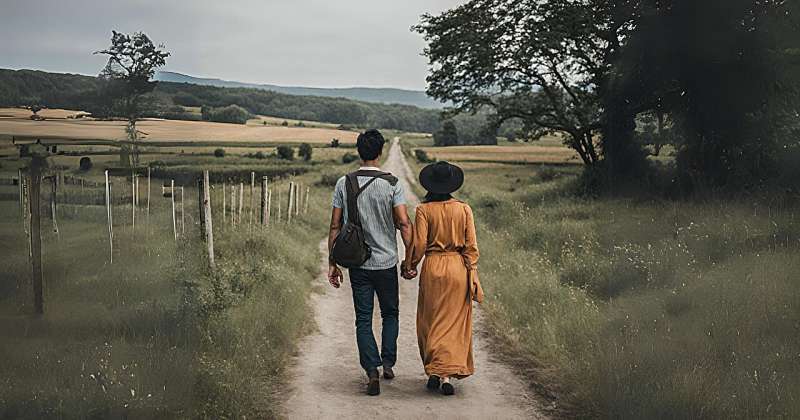
Binghamton University psychologists have published new research on migrant couples and how their ability to embrace new cultures while balancing their heritage cultures can have an impact on their relationship. Credit: Binghamton University, State University of New York
Migrant couples who can effectively balance the culture of their homeland while adapting to the dominant culture of their new home are more likely to have a better relationship, according to newly published research from psychologists at Binghamton University, State University of New York.
“When immigrants venture into a new country, they embark on a journey of blending cultures while keeping their roots alive,” said Binghamton University Ph.D. candidate Quinn Hendershot. “There has been limited research on how their ability to adjust to a new culture while embracing the cultures of their homeland can affect the relationship.”
Hendershot and Professor of Psychology Matthew Johnson have developed a model, based on established models of relational strain and culture in family dynamics, that attempts to explore this phenomenon. A core concept in their new paper is the extent to which two individuals’ respective levels of cultural competence determine how effectively the couple engages with their environment and manages challenges associated with navigating two cultures. Hendershot calls this “dyadic bicultural competence.”
“The construct of dyadic bicultural competence says that you can take advantage of your partner’s ability to navigate different cultural contexts, even if you, yourself, are not able to,” said Hendershot. “If you don’t speak the language or you’re not familiar with cultural norms, but your partner is, you’re going to be able to navigate those contexts, to kind of share in each other’s strengths.”
Their proposed model argues that overall levels of dyadic bicultural competence will be associated with relationship quality.
“Couples with lower levels of this competence will be more likely to experience greater declines in relationship quality over time than couples with higher levels,” said Johnson.
“A migrant’s capacity to speak their heritage language, uphold cherished cultural values, and stay connected with their extended family can be just as vital for their overall well-being as their adaptation to the new culture,” said Hendershot. “More specifically, we argue that couples who make the move to a new country shoulder the shared responsibility of navigating multiple cultural landscapes. This shared cultural journey can yield both advantages and challenges for individuals and their relationships.”
Hendershot said the next step is to get the model validated. Since it is a theoretical model, it has not yet been tested. She will be using existing data, as well as her own data set. She believes that this model will contribute to growth in the field.
“Our proposed model paves the way for future research into couples acclimating to a new cultural milieu, a topic of increasing relevance in an era of soaring global migration,” said Hendershot.
The paper, “Dyadic bicultural competence: A new way of conceptualizing patterns of cultural competence in close relationships,” was published in the Journal of Family Theory & Review.
More information:
Quinn E. Hendershot et al, Dyadic bicultural competence: A new way of conceptualizing patterns of cultural competence in close relationships, Journal of Family Theory & Review (2023). DOI: 10.1111/jftr.12541
Citation:
Migrant couples have better relationships when they can balance old and new cultures, says study (2023, November 13)
retrieved 13 November 2023
from https://phys.org/news/2023-11-migrant-couples-relationships-cultures.html
This document is subject to copyright. Apart from any fair dealing for the purpose of private study or research, no
part may be reproduced without the written permission. The content is provided for information purposes only.
>>> Read full article>>>
Copyright for syndicated content belongs to the linked Source : Phys.org – https://phys.org/news/2023-11-migrant-couples-relationships-cultures.html













![[News] Japan Develops 10nm Nanoimprint Technology, with Potential to Tackle EUV Bottleneck – TrendForce](https://earth-news.info/wp-content/uploads/2025/12/329851-news-japan-develops-10nm-nanoimprint-technology-with-potential-to-tackle-euv-bottleneck-trendforce-360x180.jpg)









![[News] Japan Develops 10nm Nanoimprint Technology, with Potential to Tackle EUV Bottleneck – TrendForce](https://earth-news.info/wp-content/uploads/2025/12/329851-news-japan-develops-10nm-nanoimprint-technology-with-potential-to-tackle-euv-bottleneck-trendforce-120x86.jpg)






